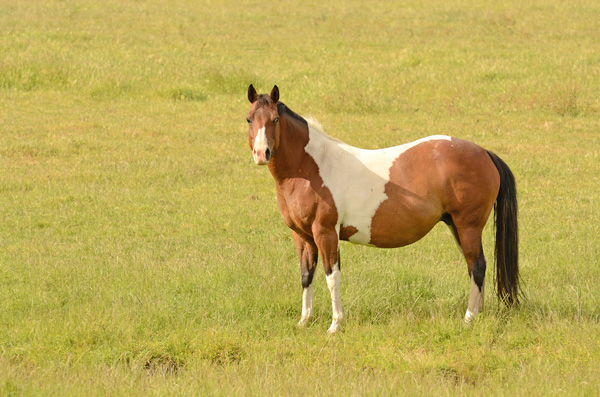This article from the University of Kentucky College of Agriculture’s Cynthia Gaskill, PhD, helps horse owners understand that poisoning doesn’t only occur from plant and horses getting into forbidden substances. Poisoning can occur from human-fed supplements and feed additives.This article was originally published in UK’s Equine Disease Quarterly.

Poisoning in horses is not a common occurrence, but when poisoning occurs, effects can be disastrous and far-reaching. Listing all toxic substances is impossible, as virtually everything on the planet can be toxic at sufficiently high dosages. What dose is safe and what dose is toxic varies with each toxin, each animal, and each situation.
Factors that influence risk from a toxic substance include animal age, concurrent diseases, exposure to concurrent toxins or drugs, reproductive status and route of exposure. This article will briefly summarize some of the more common toxic substances that can pose risks to horses in North America.
Herbal Supplements The use of herbal supplements for horses has become common in recent years. Many people believe that if something is “natural,” it must be safe and non-toxic. However, some of the most toxic substances on earth are completely natural (such as botulinum toxin, taxine in yew plants or nicotine). Many herbal and natural supplements are inherently toxic, and many herbal products contain impurities and unknown amounts of “natural” ingredients. Herbal supplements are not well regulated, and studies investigating risks associated with use of these products in horses are lacking.
Plants, Feeds and Feed Additives Pastures can contain toxic plants and grasses that can pose risks at certain times during the year or under certain circumstances. Too many toxic plants exist to list here, and importance varies greatly with geographic location. However, all weeds should be viewed with suspicion and identified if possible. Additionally, grains can be contaminated with seeds from poisonous plants. Many shrubs, trees and ornamental plants can be toxic to horses.
Hay and feed pellets can pose a toxic risk when unintended substances are incorporated into the feed. These substances include toxic weeds, toxic insects such as blister beetles, and dead animals that can serve as the origin of botulinum toxin production. Rotting, decomposing feeds or improperly stored haylage can also contain botulinum toxin. Pelleted or supplemental feeds can contain contaminants such as ionophores (such as momensin) or antibiotics due to mixing errors or contamination from transport vehicles. By-products from grain distillation can be present in supplemental feeds and can contain mycotoxins and antibiotic residues.
Mycotoxins Grains may contain fungal toxins. Grain screenings or broken grain pieces carry a higher risk of containing significant concentrations of aflatoxins and fumonisins, both important mycotoxins. Some grass forages can contain mycotoxins such as slaframine and lolitrems. Endophyte-infected tall fescue grass can contain egovaline and other mycotoxins that can cause reproductive problems in horses.
Metals and Minerals Mineral and salt supplements potentially can contain incorrect concentrations of minerals due to mixing errors or accidental mislabeling. Direct exposure to toxic metals such as arsenic and lead can occur through contaminated soils; dump sites; ashes of burned, treated lumber; some pesticides; and paint from older buildings or bridges.
Pesticides Pesticides include products designed to kill rodents, fungi, insects, snails and slugs, weeds, birds, and coyotes or other predators. Many horse owners have rodenticide products in their barns, not realizing that anything that will kill a rodent will also kill a horse if the dosage is high enough. Many pesticides contain flavorings or grain bases that are very attractive to horses. Risks from insecticides, fungicides and herbicides are generally highest with concentrated products or treated seeds.
Industrial Toxins Contamination of pasture, water and air can occur from industrial chemicals and petroleum products that are emitted upwind or upstream. Industrial toxins are not a common cause of poisoning in horses, but veterinarians and owners should be aware of nearby industrial and mining activities.

Venomous Animals Bites from venomous snakes—most importantly rattlesnakes, copperheads and water moccasins—are common occurrences in horses in the southern and western parts of North America. Bees, wasps, black widow spiders, fire ants and brown recluse spiders can also pose risks to horses.
Horse owners, farm managers, and veterinarians should be aware of the myriad of potentially toxic substances that can pose risks to horses and take steps to minimize the chance that poisoning will occur.


